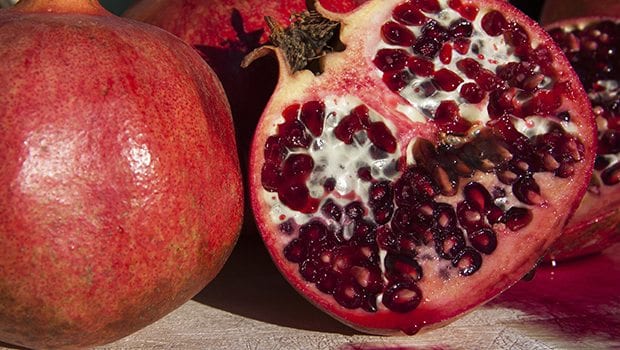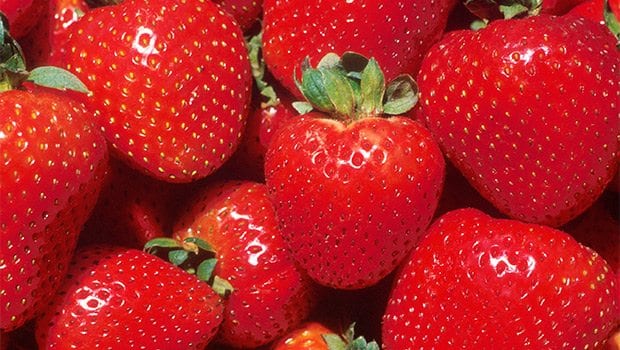Pomegranates: The “seeded apples”
Antioxidants make them a superfood

The brilliant color and odd shape are eye-catching. Although pomegranates are relatively new to the western hemisphere, they date back to at least 2,000 B.C. and are native to Iran and the East. One is prominently displayed in Madonna of the Pomegranate, a painting created by artist Sandro Botticelli in 1487. Some people think it was really the pomegranate, and not the apple, that Eve used to tempt Adam.
The name pomegranate derives from Latin and means “seeded apple.”
In addition to its unique history, pomegranates are rife with antioxidants, powerful agents that can fend off free radicals that can destroy or change a cell’s DNA. Mutations in the DNA are linked to cancer. That’s not a good thing.
Because of their high amounts of these antioxidants, pomegranates have gained a reputation as a superfood. They are also good sources of vitamin C, fiber and potassium, and are low in fats and sodium. The combination of low sodium and high potassium is important for lowering blood pressure, according to the American Heart Association. High blood pressure increases the risk of stroke and heart attack as well as heart and kidney failure.
Yet, despite its health benefits, the consumption of pomegranates is relatively low in this country in comparison to other fruits for several reasons. First is its limited availability. Fresh pomegranates are available usually from September through January, according to the Pomegranate Council. While roughly 328,000 acres are devoted to the production of apples in this country, only an estimated 30,000 acres are used for pomegranates. In addition, they are expensive, and can cost as much as $3 each.
It also takes a bit of work to get through to the sweet fruit. Regardless of the method used, it’s important to know what you can eat and what needs to be discarded. The tough outer rind is not edible. Nor is the white membrane that forms a film over the seeds. Under this membrane are the arils, fleshy red pods that contain the white crunchy seeds.
Many people suck off the juice and discard the white seed. That’s a personal preference, but the seeds are rich in fiber and provide good roughage for the body. Drinking just the juice, however, will still provide the powerful antioxidants.
It’s fairly easy to choose a pomegranate in a supermarket. A good, ripe pomegranate is heavy with firm and taut skin, according to the Pomegranate Council. The skin color can be medium to dark red with a leather-like appearance. Don’t worry about surface abrasions. They do not affect the quality of the fruit. Since they have been picked when ripe, they are ready to eat right away.
Whole pomegranates have a shelf life of several weeks when stored at room temperature and away from sunlight. When frozen individual arils can last for several months. The juice can be refrigerated for up to three days, but remain fresh for up to six months when frozen.
The popularity of pomegranates has grown. They have crept into salads, main courses, smoothies and even alcoholic mixed drinks. There is now pomegranate-flavored candy and gum.
It’s easy to “juice” a pomegranate. Merely roll the fruit on a hard surface, pressing down firmly to burst the arils. When the popping sound stops, pierce the rind and squeeze out the juice. Extracting the fruit is another story. That takes some work. The video below from Pom Wonderful offers some helpful hints.






